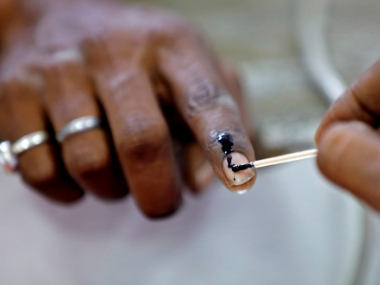Editor’s Note: This article first appeared in Issue 12 of Firstpost print. India has begun voting for the 17th Lok Sabha, and by now, the country has witnessed approximately 500 state Assembly and local government elections. This presents a unique opportunity to understand elections as defining moments in shaping our democracy. In the cacophony of polarising social media and 24X7 news channels, it is not surprising that elections as a site of correcting social and economic inequities get lost in projections and predictions. Most commentators use adjectives such as ‘wave’, ‘tsunami’, ‘earthquake’ and ‘juggernaut’, which reveal little about an election or what the outcome indicates about the electoral politics in the future. [caption id=“attachment_6425651” align=“alignleft” width=“380”]
 Representational image. Reuters[/caption] At best, these terms can mean an election in which there is an overwhelming sentiment for or against a political party that will lead to a substantial increase or decline in its vote and seat share. The vague definition or the cut-off point at which everyone can agree has ensured that the usage of such terms is driven by a partisan perspective. Critical elections and party systems Prannoy Roy and Dorab Sopariwala in their book The Verdict describe India as a site of landslide elections. They define ‘landslide’ as when the largest party wins at least twice the seats as the runner-up. They show that while the rate of landslide victories has declined in comparison to the first two decades of our democracy, in case of Lok Sabha elections, the winning party, or a pre-election coalition, get a landslide majority three in four times. While the rate of such victories for Assembly elections is significantly lower, still one in every second election ends in a landslide majority. While the concept of a landslide is useful, it does not inform us about the organisation of India’s electoral space and the nature of choices voters have to elect their representatives. Each election has a shadow of the past and tells something about the next. Political scientists use the framework of ‘party system’ to understand the rules of the electoral competition, i.e., the menu of choices that a voter gets at the time of the election. And because parties operate in that system, it also limits and opens up possibilities of how they organise and mobilise. Old party systems make way for new when a ‘critical election’ marks a sharp and durable political realignment between parties. Some political observers believe that 2014 brought in the fourth party system: a BJP-led dominant party system. If the BJP manages to form the government after 23 May, as most pre-poll surveys predict, there will be fewer doubts about the longevity of this system. India’s first election in 1952, then the ones in 1967 and 1989 marked the shift from one party system to the other. In the book Ideology and Identity: The Changing Party Systems of India, which I co-authored with Pradeep K Chhibber, we show that the movement of political parties in the ideological space marked the transition from one party system to the other (See Figure 1).
Since 1952, India has seen several distinct phases in which the dominance of one party has been decisively upturned
Advertisement
End of Article


)
)
)
)
)
)
)
)
)



